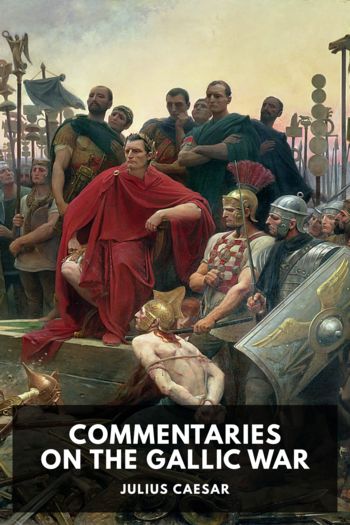Fateful Lightning: A New History of the Civil War & Reconstruction by Allen Guelzo (icecream ebook reader txt) 📗

- Author: Allen Guelzo
Book online «Fateful Lightning: A New History of the Civil War & Reconstruction by Allen Guelzo (icecream ebook reader txt) 📗». Author Allen Guelzo
“YOU HAVE KINDLED A FIRE”
The first round of threats and assurances played out in February 1819, when Missouri applied for admission to the Union with a state constitution that legally recognized slavery. Missouri’s application was a moment for celebration, since it was the first territory that lay entirely west of the Mississippi, in the Louisiana Purchase lands, to apply to Congress for statehood. What was less obvious was that Missouri’s petition also represented a challenge to the free states, since the Union in 1819 was perfectly balanced between eleven free states and eleven slave states. Allow Missouri to enter the Union as a slave state, and it would add two “slave” senators to the Senate and an indeterminate number of representatives to the House (artificially swollen, as Northerners saw it, by the three-fifths rule). That, in turn, might give the South enough of an edge in Congress to disrupt the Northern campaign to protect American manufacturing and weaken the demands of Henry Clay and the National Republicans for an “American System” of federally tax-supported roads, turnpikes, canals and other “internal improvements.” So on February 13, 1819, New York congressman James Tallmadge rose in the House to add an amendment to the Missouri statehood bill that would bar the further importation of slaves into Missouri and emancipate any slave living in Missouri who reached the age of twenty-five. 2
Southern congressional delegations erupted in rage and panic. Not only was Missouri the first of the Louisiana Purchase territories to be added to the Union, but it also represented the only direct highway that the South possessed to lands further west. The land President Jefferson had purchased lay within a rough triangle, with the long side running from a point on the north Pacific coast in Oregon to Louisiana’s border with the old Spanish empire, and the great bulk of the area lying along the United States’ northern boundary with British Canada. Northern settlers could expand straight westward, across the Mississippi River, without being crammed together, but Southern settlers moving west were forced into the narrow lower corner of the triangle, against the border of Spanish Texas. Unless Southerners and slavery were allowed to expand equally into the Louisiana Purchase territories with Northerners, then the South could hope to develop only one or two future slave states. In short order, their alarm turned into threats of disunion and demands for assurance.
Tallmadge’s amendment, warned Thomas W. Cobb of Georgia, was full of “effects destructive of the peace and harmony of the Union… They were kindling a fire which all the waters of the ocean could extinguish. It could be extinguished only in oceans of blood.”3 Nevertheless, the Tallmadge restrictions passed the House, 78 to 66, with representatives voting along virtually exclusively sectional North-South lines, and only the phalanx of Southern senators in the Senate (and five free-state allies) killed the amended Missouri bill there. The House sent the amendments back to the Senate again, and at that point, in March 1819, Congress adjourned and left matters hanging.
The brief pause the intersession brought did nothing to allay the fears of onlookers. For the first time, slavery and sectionalism had reared their heads in Congress as a matter of national debate, and almost immediately Congress had divided along sectional lines. “This momentous question, like a fire-bell in the night, awakened and filled me with terror,” wrote an aging Thomas Jefferson. “I considered it at once the knell of the Union.” 4 To Jefferson’s relief, a solution quickly appeared in the form of Maine and Henry Clay. By the time Congress had settled back into Washington, another petition for admission to the Union had been received from Maine, which had been governed since colonial times as a province of Massachusetts. Henry Clay, then the Speaker of the House of Representatives, proposed to damp down the anxieties about upsetting the sectional balance in Congress by simultaneously admitting Missouri (as a slave state) and Maine (as a free state) to the Union. For the future, Clay called for the division of the Louisiana Purchase into two zones along the latitude line of 36° 30′ (the southern boundary line of Missouri), with the northern zone forever reserved for “free” settlement only and the southern zone left open to the extension of slavery. Adroitly sidestepping the partisans of both sections, Clay maneuvered the legislation through the House and greased its way through a joint House-Senate reconciliation committee to the desk of President James Monroe, who signed it on March 6, 1820. 5
The Missouri Compromise made the reputation of Henry Clay as a national reconciler and champion of the Union, and the 36°30′ line became the mutually agreed line of settlement that was supposed to squelch the need for any further antagonistic debates over the extension of slavery. It is difficult, looking back on the Missouri Compromise, to see just what advantages slaveholders believed they had won,





Comments (0)